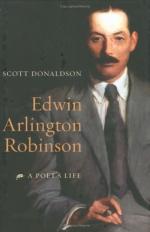|
This section contains 4,847 words (approx. 17 pages at 300 words per page) |

|
SOURCE: “Down There with E. A. R.: Amaranth,” in Parnassus: Poetry in Review, Vols. 17 & 18, Nos. 2 & 1, 1993, pp. 282-95.
In the following essay, Cassity argues that Amaranth is “the superior of [Robinson's medieval poems, and possibly his masterpiece.”]
Encouraged, or rendered avaricious, by the success of Tristram in 1927—it sold over 60,000 copies—Edwin Arlington Robinson devoted the remaining years of his life to bringing out a long poem almost annually: Cavender's House (1929); The Glory of the Nightingales (1930); Matthias at the Door (1931); Talifer (1933); Amaranth (1934); and, posthumously in 1935, King Jasper. None was the financial equal of the Arthurian narrative, but each of them enjoyed sales that were by any other standard impressive, and I am prepared to argue that Amaranth is the superior of his medieval poems, and possibly his masterpiece. Certainly, in subject matter, it is the most Robinsonian of Robinson poems, a full-scale treatment of artistic, personal, and professional failure...
|
This section contains 4,847 words (approx. 17 pages at 300 words per page) |

|


